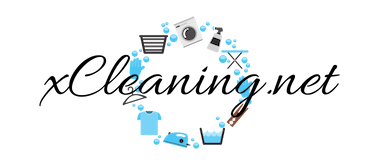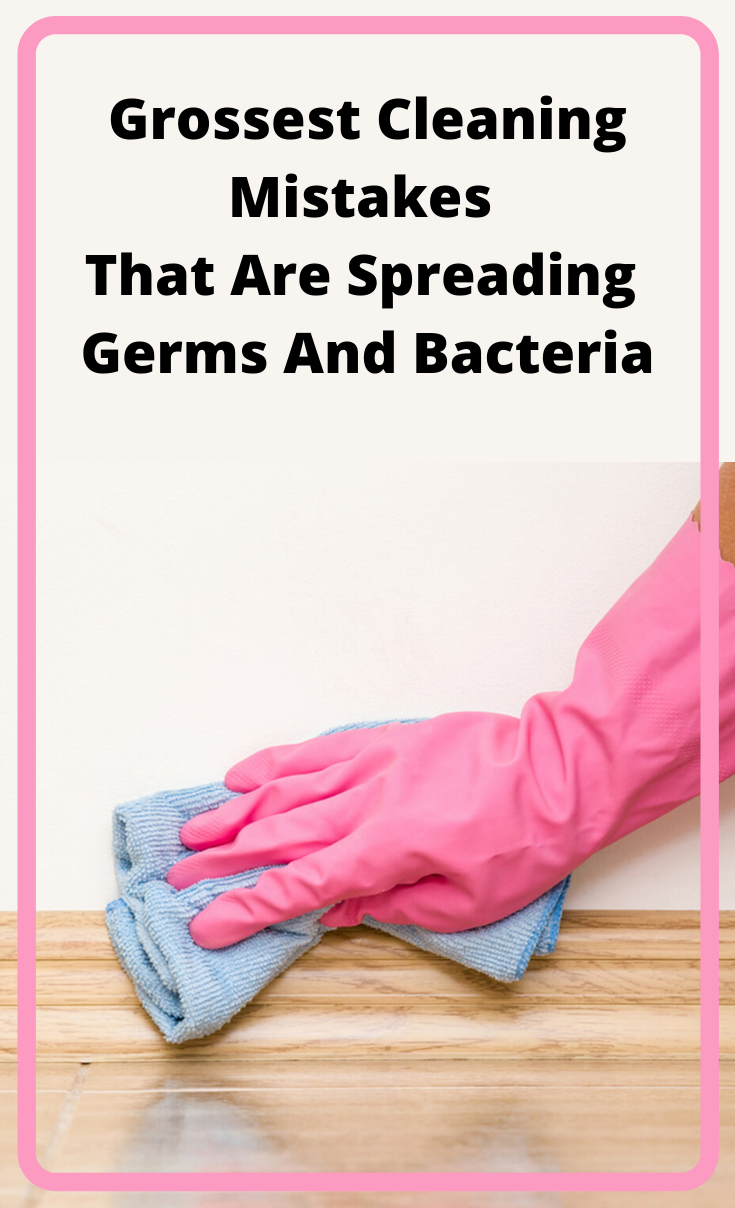Living in a clean, tidy and spotless home is the first step towards a healthy lifestyle. As a matter of fact, some studies show that living in a clean and tidy prevents depression and anxiety and relieves stress. However, there are some bad habits that may prevent you from achieving a long-lasting clean. Fortunately, there are some steps you can take to avoid spreading germs and bacteria when cleaning. In addition you will be able to correct these bad cleaning habits!
1. #Biggest Mistake – Using the Same Rag Around the House
Despite spritzing it with a cleaning solution, when you use the same rag in multiple spots around the house the rag hangs on to the grime from the previous surface and spreads it to whichever surface it touches next. That means bathroom germs get wiped onto kitchen counters, the living room coffee table and anywhere else that cloth is used.
Fix It: Use a new sheet of paper towel for each surface cleaned, or have a microfiber cleaning cloth designated for each area of your home.
2. Using a Feather Duster
No matter how much the advertisements for these dusters say the feathers “trap and lock dust,” they don’t. Feather dusters are notorious for spreading dust around a surface or pushing it off to fall to the ground, rather than removing it.
Fix It: Use a microfiber cloth or a paper towel.
3. Not Cleaning the Vacuum
When a vacuum filter hasn’t been changed or cleaned in a while, not only is the vacuum unable to pick up as much dirt and dust as it should, due to decreased suction, but dirt also is blown back into the air and carpet by the dusty vent.
Fix It: Change or empty vacuum bags or canisters immediately after they become full.
4. Not Cleaning the Toilet Brush
If a toilet brush is put right back into its holder right after use, the moisture and germs from the toilet get trapped in the container and the brush, where they breed and multiply. These germs are then rubbed back into your toilet the next time the brush is used.
Fix It: After you clean your toilet, place the brush between the toilet bowl and seat, with the brush end facing inward. Lower the lid to secure the brush, then spray it with a disinfectant like vinegar or bleach.
5. Not Cleaning The Sink
Whether it has a standard drain or a garbage disposal, sinks rapidly grow germs and bacteria due to being a moist environment where food particles tend to get stuck. This issue is compounded when food or standing water is left in the sink, the drain or the garbage disposal.
Fix It: Wipe down the sink after each use using baking soda and vinegar.
6. Cleaning From The Floor Up
When cleaning the floor before cleaning the furniture, counters, and dusting, all of those particles fall to the floor, therefore the floor is needing to be cleaned again.
Fix It: Start in a room and clean from the top down. Start at the ceiling removing cobwebs, dust, and work to windows, sills or high nooks and crannies that seem all the rage in the new houses. Work your way down to counters, tables, furniture, followed by baseboards and ending at the floor.
7. Spraying Cleaner Directly on a Surface
Spraying a cleaner directly onto furniture, countertops or glass can cause a buildup of the solution, leading to greasy furniture and surfaces, and streaky windows. This also could cause dirt and dust to stick to them more firmly.
Fix It: Spray cleaning solution on a microfiber cleaning cloth or disposable paper towel, then wipe down surfaces.
8. Not Cleaning the Washing Machine
Not cleaning your washing machine is one of the great cleaning mistakes, most people don’t consider. You need to clean out your washing machine because of the build-up of skin cells, stains, and dust mites.
Fix It: Clean the washing machine using baking soda and vinegar:
For a top-loading washing machine
- start the longest washing cycle
- when the drum is nearly full of water, pour in 1 liter of vinegar and 1 cup of baking soda
- leave the lid open and allowing the mixture to sit in the paused cycle for at least an hour
For a front-loading washing machine:
- pour a solution of 1/4 cup each baking soda and water into the detergent compartment
- then pour 2 cups of vinegar into the drum
- set your machine to the hottest temperature and let it do its thing
- when the cycle is over, wipe the drum clean, along with the door, detergent compartment and exterior
9. Don’t Wash The Cutting Board with Dish Soap
While dish soap and hot water remove visible food residue from a cutting board, the cuts in wood and plastic cutting boards trap microscopic food particles. These breed bacteria that transfer to any foods you prepare on that cutting board.
Fix It: soak your cutting boards in hydrogen peroxide or a bleach solution (2 tablespoons of bleach and 1 gallon of water), rinse with water and dry completely.
10. Over-Cleaning
Tidying our environment can make us feel more relaxed and in control. That said, over-cleaning can be a sign of obsessive thinking and other anxiety disorders. Plus, scrubbing too hard and using large amounts of cleaning products can damage your belongings. Be kind to yourself and your home: Clean the most used places once a week, and do a deeper clean every few months.
![]()













































